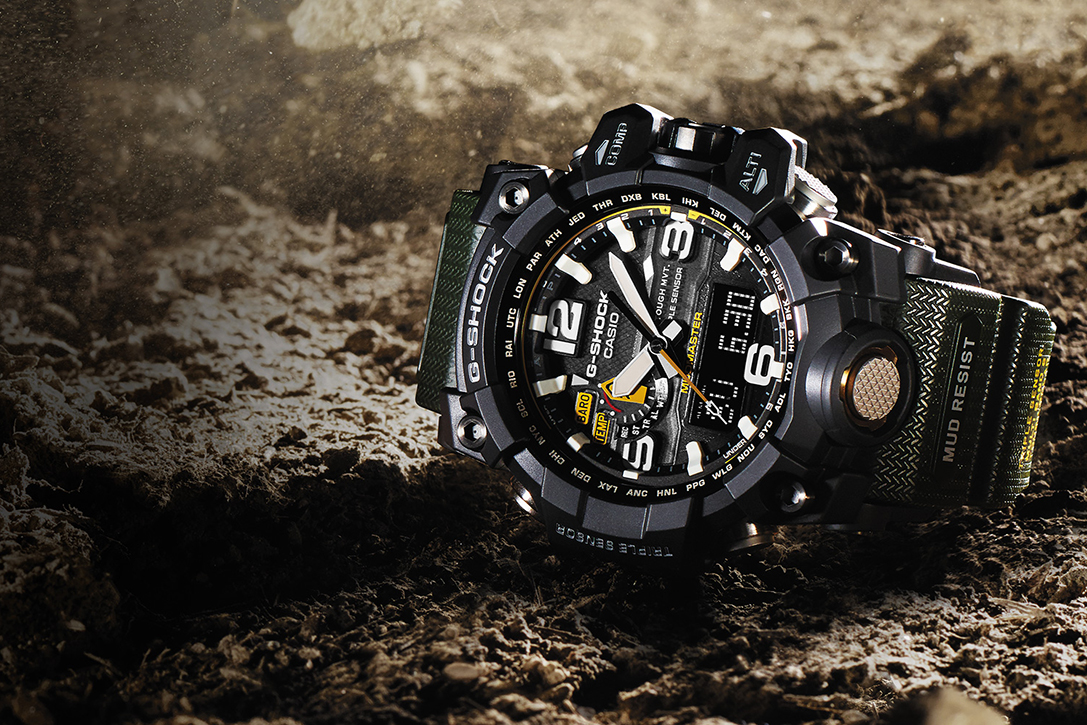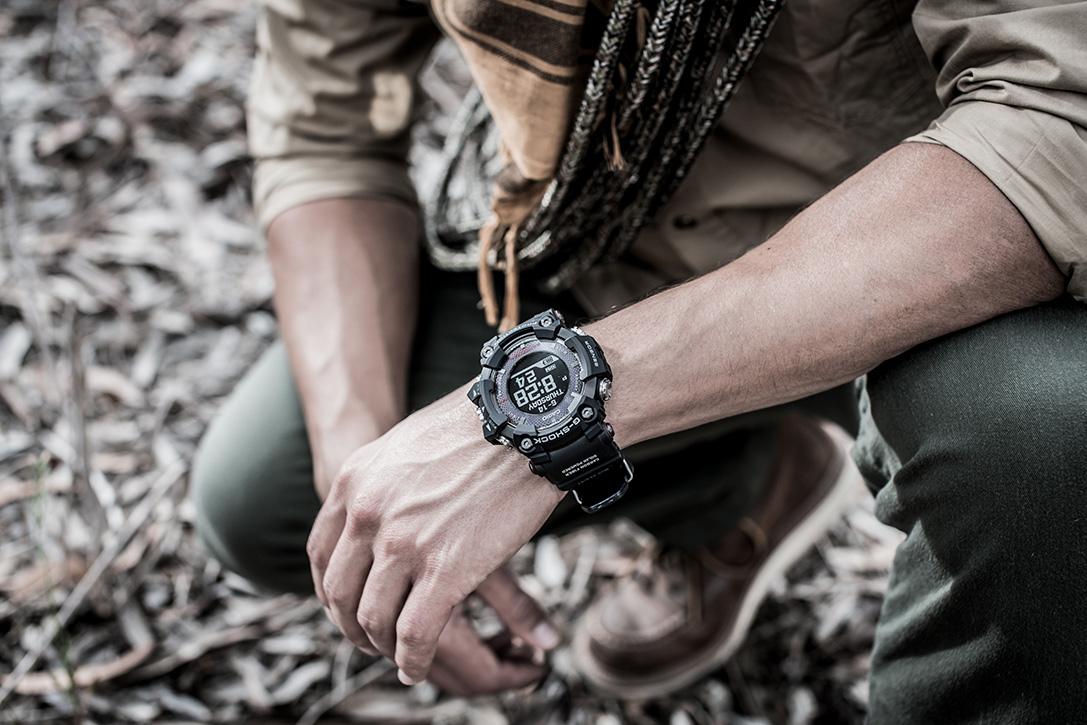A tactical watch can do much more than just tell the time. Built from the most advanced materials with dozens of advanced features, this watch is designed to provide vital data and withstand the harshest conditions. To find the right tactical watch, you’ll need to decide which of these features and materials are best suited for the type of activity you expect your watch to encounter.
Timekeeping functions
Like any watch, a tactical watch will be able to tell you what time of day it is. But timekeeping features go beyond the standard configuration. From months to milliseconds, tactical watches offer a wide range of accurate time measurements.
Stopwatch
Whether you use it to estimate distance traveled or to synchronize operations with other members of your unit, a stopwatch is a great tool for accurately measuring elapsed time. Almost every tactical watch is equipped with a stopwatch.

Countdown timer
Like a stopwatch, a countdown timer is a great tool for group coordination. The countdown timer counts down from the manually entered time and will beep to indicate when the allotted time is up. Countdown timers are a great way to set reminders or limit the time spent on various tasks.
Calendar / date display
Many tactical watches are equipped with a calendar and a place to display the current day. This allows users to track time on a larger scale rather than in smaller increments such as seconds or minutes. If you’re lost in the woods or separated from your unit, these day and month indicators will help you remember the current date.
Alarm clock
Tactical watches allow you to set alarms to remind you when to wake up, when to go to bed, when to eat or when to exercise. The military, in particular, adheres to a strict, regulated schedule, from which they must not deviate. Setting multiple alarms throughout the day makes sticking to this schedule much easier.
Wartime
The military does not keep track of time from morning (to lunch) and evening (after lunch), but in increments of twenty-four hours. Tactical watches have the option of using the standard before-and-after function or using twenty-four-hour military time.
Time zones
For people in the field who are in different countries, or military personnel who are stationed in other parts of the world, changing time zones means setting the clock manually. However, if you have a tactical watch, you won’t need to change it; many tactical watches automatically change their readings to accommodate the change in time zones. Some clocks recognize and adjust to up to thirty-five different time zones around the world.
Advanced functions
A typical mechanical watch has an hour hand, a minute hand, and a second hand and can keep track of time for twenty-four hours. However, tactical watches are equipped with a number of advanced features and functions that can provide vital data in emergency and combat situations.
Compass
A compass can offer vital orientation if you find yourself lost in an unfamiliar place. Some tactical watches are equipped with a digital compass that provides extremely accurate direction, while others are built with a rotating bezel around the watch face that indicates the cardinal directions.
Altimeter
The altimeter determines your height above sea level, or depth in meters. This feature is especially useful for pilots and climbers. An altimeter is also useful in conjunction with a topographic map to help pinpoint your location.
Tachymeter
A tachymeter is an instrument on a tactical watch that is used to determine speed as a function of time and distance traveled. With the tachymeter markings on the bezel and the position of the second hand from one point on the bezel to another, you can determine your speed. Conversely, you can also use elapsed time and a known speed to find the distance you’ve traveled.
Barometer
A barometer measures changes in air pressure to help predict short-term weather changes. A decrease in air pressure indicates that adverse weather conditions are possible, while an increase signals good weather. With this information, you can prepare accordingly for the conditions you will encounter.
Thermometer
Some tactical watches are equipped with a thermometer to help you monitor sudden changes in temperature. These readings can help you understand the temperature rating of your gear; if your sleeping bag works at -20°C, but you feel cold in it at -10°C, the thermometer on your watch can tell you it’s time for another sleeping bag.
Data about the Moon
Advanced tactical watches have the ability to indicate tides based on lunar data. The moon directly affects the tides on earth. Knowing the position of the moon can help you know when the tide is coming in and out, thereby helping you navigate the coast more easily.
Features
Tactical watches are designed to work in harsh conditions. They must be able to withstand shocks, scratches, water and a number of other hazards while providing accurate information. Fortunately, these watches are built with several features to ensure that they will continue to work no matter what they encounter.
Impact resistance
A strong outside influence on your tactical watch is inevitable. Whether you drop it, hit something while wearing it, or drop something on it, a tactical watch is designed to absorb those impacts and continue to function normally. This will come in handy in battle or during nature.
Magnet resistance
Mechanical watches made of metal parts can quickly deteriorate under the influence of a magnetic field. Even tactical watches, which are usually digital, can experience lag when they come into contact with a magnet. To counter this, many tactical watches are magneto-resistant: they continue to function normally when exposed to a strong magnetic field.
Scratch resistance
All the information that your tactical watch can transmit is presented on its display. One misplaced scratch can prevent you from seeing the time, date and other indicators clearly. As a result, tactical watches are designed to resist scratches so that they can clearly display important information on the watch face.
Water resistance
Solar energy There is always a chance that your watch will fall into water. Marine special forces and deep-sea divers especially need watches that can continue to work after diving to the depths. Tactical watches are often designed to be water resistant. Some can even continue to function after diving to a depth of more than 200 meters.
Tactical watch battery life can last anywhere from two to seven years depending on the longevity of the battery used in the watch. Solar clocks provide even more uninterrupted operation. They use the sun’s rays as a source of energy and, without allowing any other internal failures, can work indefinitely. In addition to providing peace of mind, this can be critical in certain long-term scenarios.
Clock with radio control
When keeping track of time, accuracy is of the utmost importance. Atomic clocks use microscopic frequencies to keep accurate time within nanoseconds. Packing this technology into a wristwatch is impossible, but there is a workaround: many tactical watches use radio frequencies to link to an atomic clock to keep accurate time. The clock sends out these radio frequencies several times a day to make sure it’s still keeping the correct time based on the atomic clock it’s communicating with.
Use in low light
The hands and numbers on a typical wristwatch are difficult to see in the dark. However, military personnel and travelers still need to know the time at night. As a result, many tactical watches are built with a backlight for high visibility when it’s dark. Other models are equipped with illuminated arrows and numbering markings for the same purpose.
Materials
To be able to participate in the harsh conditions of combat operations and field missions, tactical watches need to be made of the most difficult materials. These materials can withstand shocks, resist liquids, resist scratches, and more, all while ensuring the watch’s ability to continue working properly. The various components of a tactical watch are made from a variety of high-quality materials that combine to make a durable watch that can take the brunt of anything.
Casing
The case of a tactical watch is the part that houses the display. It contains all the working parts that allow the watch to display information, so it needs to be made of particularly strong materials.

Carbon
The carbon-reinforced body is strong and light. This allows the user to move their hand and wrist comfortably without much weight, while maintaining the strength necessary to ensure the watch functions.
Stainless Steel
Stainless steel is a heavier material than carbon. While this may lead to more weight and less maneuverability, stainless steel watch cases make up for it with higher protective capabilities. Tactical watches with a stainless steel case can take and withstand shock without affecting the integrity of the watch.
Crystal
The crystal is a transparent piece of the watch through which the information on the display is read. There are many materials that can be used to make a watch crystal, but two in particular stand out for use in tactical watches.
Mineral glass
Mineral glass is a hard and durable material. It resists scratches and can handle impacts without cracking or breaking. It is a much better choice than acrylic or plastic and is designed to meet the rigors of use that tactical watches are bound to face.
Sapphire
Sapphire is one of the hardest materials used to make a dial, second only to diamond. This hardness ensures that the sapphire watch face will not be scratched, cracked or destroyed even under severe impacts. Sapphire crystal is the best choice for tactical watches.
Strap
The strap is the part of the watch that wraps around the wrist and locks in place, allowing the wearer to wear the watch on the wrist. It is usually fastened with a buckle. Many luxury watch bands are made of leather, but this is not a good option for tactical watches, as leather wears out over time and is susceptible to water damage. Instead, tactical watch bands are usually made from the following materials.
Rubber
Waterproof, flexible and lightweight rubber is the main material for a tactical watch strap. It is an excellent insulator that resists heat and cold to ensure user comfort. In addition, it is very strong and does not break under pressure.
Silicon
Silicone is another good choice for a tactical watch strap. Like rubber, it is flexible, strong and light. Like the rubber, it’s very heat resistant, ensuring it doesn’t get too hot or too cold on the wearer’s wrist. It also does not harm water and is useful in almost any environment.
Polyurethane (PU)
Polyurethane is used in a number of other tactical products from clothing to footwear. Its extreme versatility and durability make it an ideal choice for, among other things, tactical wristwatch straps. The strap on tactical watches can also be made from a mixture of rubber, silicone and/or polyurethane.
Finding the right tactical watch is not an easy task. These watches offer a variety of functions and materials in their composition. The key to choosing the right one is determining the type of activity you plan to do while wearing the watch and finding a watch that meets those needs. Getting to know the range of features these watches offer should help you choose the perfect tactical watch to suit your needs.
